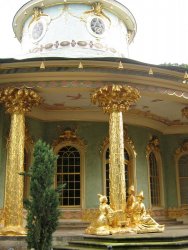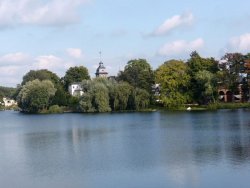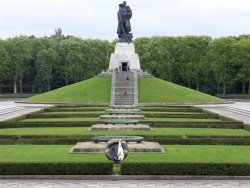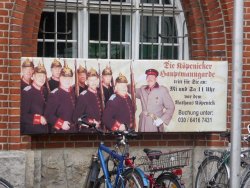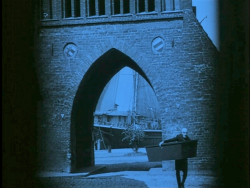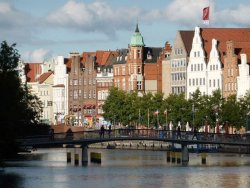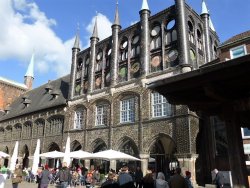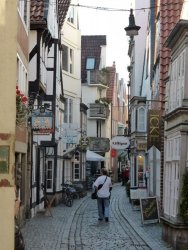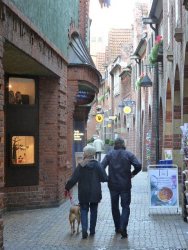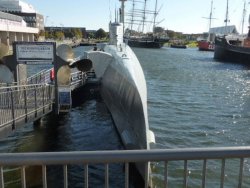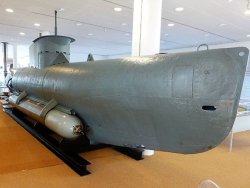OZDUCK
Established Member
- Joined
- Aug 1, 2010
- Posts
- 4,699
And now onto Berlin. Again a lot of photos missing, grumble grumble, but still a few of some different parts of Berlin. Luckily we went to the major museums and sites in 2011 and those photos are safe. Our friend from Bad Homburg, another very, very distant cousin of my wife was visiting Berlin to see his son and acted as tour guide for a day or so.
Bernauer Strasse and the Berlin Wall Memorial - of course the wall was called the "Anti-Fascist Protection Rampart " by the DDR. This photo shows that the wall was actually two barriers with a "death strip" between them.


Charlottenburg Palace built 17th/18th C.
Front view

Rear view

I dragged my wife to the Humboldthain Park in Northern Berlin to have a look at the remains of the old WW2 Flak Tower. With my brilliant navigation I was unable to find this minor structure.
Credit: Youtube
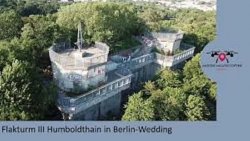
But I did find the adjacent "Control Tower" about 500 metres away. It had been the same height but with a smaller footprint.
Me, wondering why the remains didn't look like the photos I had seen.

The large steel hatch protected entrances had been concreted up to prevent entry.

In our now doomed trip in August I was determined to rehabilitate my reputation as a tour guide and visit the larger tower.
Speaking of Totalitarian Regimes. We went for a walk, in the rain, along Karl-Marx-Allee (Called Stalinallee between 1952 - 196 before even the GDR found that name a bit embarrassing). It was built as a showcase of the socialist classicism of the Soviet era. A lot of the old Soviet-era signs advertising Lada's etc are still on top of the buildings. The elite of the DDR would have lived in these buildings - except for those who had country Dachas. If you have seen the excellent film Good-Bye Lenin! a lot of it was filmed here.

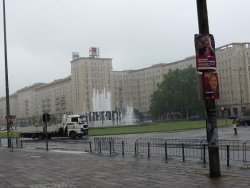
A Berlin Landmark at night
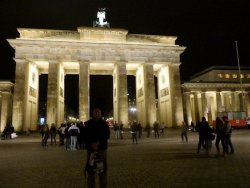
Bernauer Strasse and the Berlin Wall Memorial - of course the wall was called the "Anti-Fascist Protection Rampart " by the DDR. This photo shows that the wall was actually two barriers with a "death strip" between them.


Charlottenburg Palace built 17th/18th C.
Front view

Rear view

I dragged my wife to the Humboldthain Park in Northern Berlin to have a look at the remains of the old WW2 Flak Tower. With my brilliant navigation I was unable to find this minor structure.
Credit: Youtube

But I did find the adjacent "Control Tower" about 500 metres away. It had been the same height but with a smaller footprint.
Me, wondering why the remains didn't look like the photos I had seen.

The large steel hatch protected entrances had been concreted up to prevent entry.

In our now doomed trip in August I was determined to rehabilitate my reputation as a tour guide and visit the larger tower.
Speaking of Totalitarian Regimes. We went for a walk, in the rain, along Karl-Marx-Allee (Called Stalinallee between 1952 - 196 before even the GDR found that name a bit embarrassing). It was built as a showcase of the socialist classicism of the Soviet era. A lot of the old Soviet-era signs advertising Lada's etc are still on top of the buildings. The elite of the DDR would have lived in these buildings - except for those who had country Dachas. If you have seen the excellent film Good-Bye Lenin! a lot of it was filmed here.


A Berlin Landmark at night













